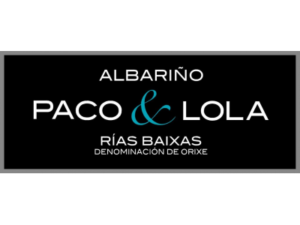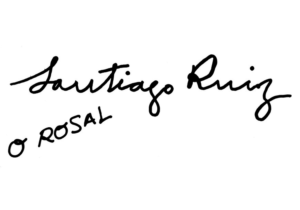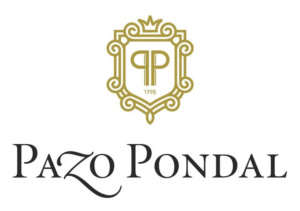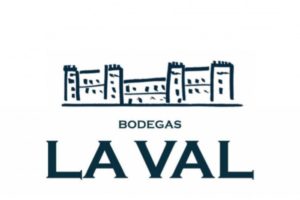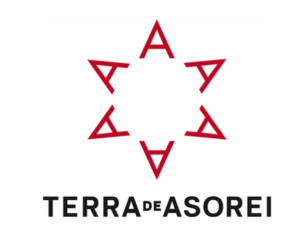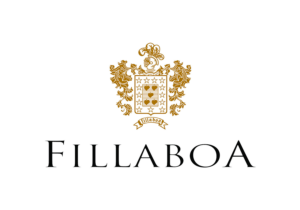Rias Baixas Winery Guide
Rias Baixas is located in the Galicia region of Northwestern Spain and enjoys a cool, coastal climate. The region is best known for producing Albariño, a crisp and clean tasting white wine that rivals wines from the world’s renowned white wine-producing regions, including France’s Loire Valley, New Zealand, and the Rhine region of Germany.
Explore Rías Baixas with these 16 wineries:
Established in 2003, Señorío de Rubiós currently has 105 partners working together to combine traditional and modern values in their winemaking. The Miño River runs through Señorío de Rubiós in the Condado do Tea sub-zone. Together with innovation comes respect for the natural expression of Albariño, driven by meticulous viticulture and harvest standards.
History. Family. Friends. Dedication. Vocation. A wide range of words could describe our winery, Adegas Valmiñor, because we can be defined by them all, but they flow into the same passion: our wines. The winery was founded in 1997, but our tradition is ancestral. We love the Albariño grape, but also Treixadura, Loureiro, and Castañal. We love our land and all it gives to us. We respect and take care of it because it is our legacy. It is our entire life. In Adegas Valmiñor we aspire to be the national wine vanguard. A vanguard held by the land and vineyards selection, exquisite care of the grapes, and advanced technologies in order to produce a wide range of wines, which are full of personality and do not leave indifferent even the most expert palates.
The Martín family has been producing Albariño in the village of Barrantes (Salnés) for generations, originally for consumption by friends, family, and a few local restaurants. In 1981, Domingo Martin decided it was time to expand; he built the current cellar of Bodegas Castro Martín sourcing from 27.1 acres of vineyards. Castro Martín wines have a distinctive, but typically fresh and zesty Albariño style, characterized by at least 5 to 6 months on the lees.
Pazo de Señorans is a family business on the site of a 16th century Pazo manor house. The winery is entirely focused on the Albariño variety. Pazo de Señorans honors the typicity of the Albariño grape and the aging capacity of their wines to produce the best expression of Rias Baixas winemaking.
Founded in 2005, Paco y Lola is the fruit of a business initiative of a group of independent winegrowers from O Salnés who wanted to take their production to the highest professional level. These growers formed a cooperative with over 400 members, the largest in DO Rías Baixas. Paco y Lola farms almost 500 acres of vineyards situated over more than 1800 plots of land and practices small lot winemaking with strong regional character.
The historic Santiago Ruiz winery is located in an idyllic, peaceful setting surrounded by several acres of old vines trellised in the traditional style. The winery strives to honor tradition with the latest advances in technology, supported by a state-of-the-art winemaking facility completed in 2007. The 94-acre estate is based in the heart of O Rosal, and encompasses Albariño, Loureiro, Treixadura, Caiño Blanco and Godello, all native varieties that are included in the final blend.
Pazo Pondal winery naturally blends into the impressive landscape of Arbo, Condado do Tea. The outdoor areas inspire and delight visitors, who are able to enjoy the exceptional views of our vineyards. Currently, we are the second generation in a family tradition dedicated to the cultivation of our beloved Albariño. After many years of hard work, we saw our dreams come true in 2006 with the inauguration of the Pazo Pondal winery, built on the Pondal plot from which it gets its name. We have inherited the passion, devotion, and love of the vineyards from our ancestors, and are increasingly dedicated to viticulture that is responsible and respectful of the environment. Our mission with these soils is to minimize erosion due to area’s high rainfall and the sloping land and to achieve mineral balance in the soils and fertility making the plants naturally healthy and avoiding dependency on chemicals/biocides.
Founded in 1985, Bodegas La Val was one of the first wineries in the region to source grapes solely from its own vineyards. The vineyards span more than 148 acres in the sub-regions of Condado de Tea and O Rosal, divided into four estates. Soil types range from alluvial and granite to slate, allowing the winery to produce terroir-driven wines with a range of complexity and minerality.
Condes de Albarei was founded in 1988 by a small group of vine growers from the Salnés Valley, who united their efforts and vineyards to make and market excellent, high-quality Albariños. Condes de Albarei was the first Spanish white wine to earn a Gold Medal at the Challenge International du Vin in Bordeaux in 1991, and ever since, their wines have earned the highest recognition. A benchmark wine from DO Rías Baixas, Condes de Albarei Albariño is the flagship brand of the winery.
Terra de Asorei is an association of top growers belonging to DO Rias Baixas who have joined forces to produce premium, 100% Albariño wines. Located in the Salnés Valley with over 172 acres of vineyards averaging more than 20 years of age, the winery benefits from a beneficial Atlantic climate with mild temperatures and generous, but not excessive rainfall. Terra de Asorei combines the passion of a family-owned company with the professionalism of a larger organization to produce Terra de Asorei, Pazo Torrado and Nai e Señora wines.
In the heart of the Salnés Valley, Bodegas Vionta exemplifies a blend of tradition and modernity, offering a multi-disciplinary space in a state-of-the-art architectural building. The vineyards are located in three distinct zones of the Salnés: Cornazo, Ribadulla, y Cubelas. The terraced vineyards, trellised on granite pillars, produce excellent white and red grapes. They are, without doubt, planted in one of the best and most cherished places in DO Rías Baixas. The climate is characterized by mild temperatures and abundant rainfall. The Albariño variety reaches its best quality in this climate and soil, influenced by the longest coastal plains of Galicia bordering the Atlantic Ocean. The climatic conditions, location, and the application of the most modern production techniques make these vineyards the highest expression of quality from Bodegas Vionta.
Martín Códax was founded in 1986 and was named after a medieval Galician troubadour whose poems have survived to the present. Martín Códax oversees more than 1,400 small vineyard parcels farmed by 550 families in the Cambados area. Through continuous investment in research, innovation, and people, the wines of Martin Codax have won international acclaim in over 40 countries and have come to symbolize Galician culture at its finest.
The history of Bodegas As Laxas dates to 1975 when the family of Simon Ferro completed their inaugural harvest. As Laxas was one of the first wineries in Rías Baixas (prior to the official founding of the DO) and is a founding member of the Regulation Council of 1986. The winery is located in the Miño River Valley, in the village of Arbo. The vineyards are over 30 years old and are planted on south-facing granite terraces between 500 and 650 feet. The exceptional micro-climate is characterized by mild temperatures with an annual average of 60ºF, very little frost and abundant rainfall. This micro-climate is ideal for ripening, characterized by higher sugar content and lower acidity level than more northerly areas of Rías Baixas that face more variable climates.
Bodegas Fillaboa is a stunning, historic estate that only produces limited-edition, small-production 100% Albariño wines. Fillaboa, which means “good daughter” in Galician, is the biggest estate on the property register of Pontevedra and one of the oldest in Galicia. Bodegas Fillaboa owns 70 hectares (about 175 acres) of vineyards that are planted on rolling slopes, along the southern border of the Tea and Miño Rivers, a natural frontier with Portugal. The estate is divided into 11 distinct vineyard blocks, which create unique and personalized wines. The richness of the vineyard’s soil, which is well drained and extremely suitable for growing high-quality fruit; close proximity to the Atlantic Ocean; rainy weather and mild temperatures make Fillaboa a truly special place for growing world-class Albariño. In 2000 the Masaveu family acquired the Fillaboa estate, one of the oldest farms in Galicia, with a commitment to making it a benchmark of quality not only in Rías Baixas, but in all of Spain. This ambitious project is still pursued to this day under the direction of José Masaveu, who is part of the ‘new generation’ of the Masaveu Family.
Altos de Torona is a 250-acre vineyard and winery located on the slope of Mount Galelo in the Tomiño area of Pontevedra. Although near the Atlantic and the Miño River, the estate’s mid-slope location protects it from the moisture of the valley and the extreme cold of the summit. A southern orientation ensures ample sunshine for healthy ripening of the grapes.
Bodegas Pablo Padín is a family-owned winery devoted to the production and marketing of still and sparkling Albariño wines. The winery is located in the heart of the Salnés Valley, the original home of the Albariño grape as well as the oldest sub-zone of DO Rías Baixas. In 1984, the Padín-Garrido family started up a small business project founded on a long tradition of family wine growing and winemaking. The goal was to launch the production of Albariño wines to meet the growing demand from the region. In 1989, the modest firm formally launched as Bodegas Pablo Padín and incorporated into the recently founded DO Rías Baixas. This progress fueled the modernization of the winery’s infrastructure and technology, combined with the family’s longstanding knowledge of the traditional elaboration of wine. This winning combination has allowed Bodegas Pablo Padín to present Albariño that ranks high among the wines of Rías Baixas. In 2012, Bodegas Pablo Padín added to their family legacy and became a pioneer in the production of one of the first sparkling Albariño wines from Rías Baixas, made in the Champenoise or Traditional Method inspired by the best of Champagne and Cava.
Photo Credit: Xurxo Lobato
This entry was posted on Friday, January 18th, 2019 at 12:56 pm and is filed under . You can follow any responses to this entry through the RSS 2.0 feed. Both comments and pings are currently closed.




